Introduction to Augmentative and Alternative Communication in Speech Therapy
Augmentative and alternative communication (AAC) plays a vital role in supporting individuals with speech, language, or communication impairments. From early childhood through adulthood, AAC systems facilitate expression, social interaction, and independence, complementing traditional speech therapy approaches. This article explores the various types and models of AAC, the critical role of speech-language pathologists, and effective strategies for assessment, selection, and implementation in diverse settings.
Understanding AAC: Types, Main Models, and Organizational Strategies
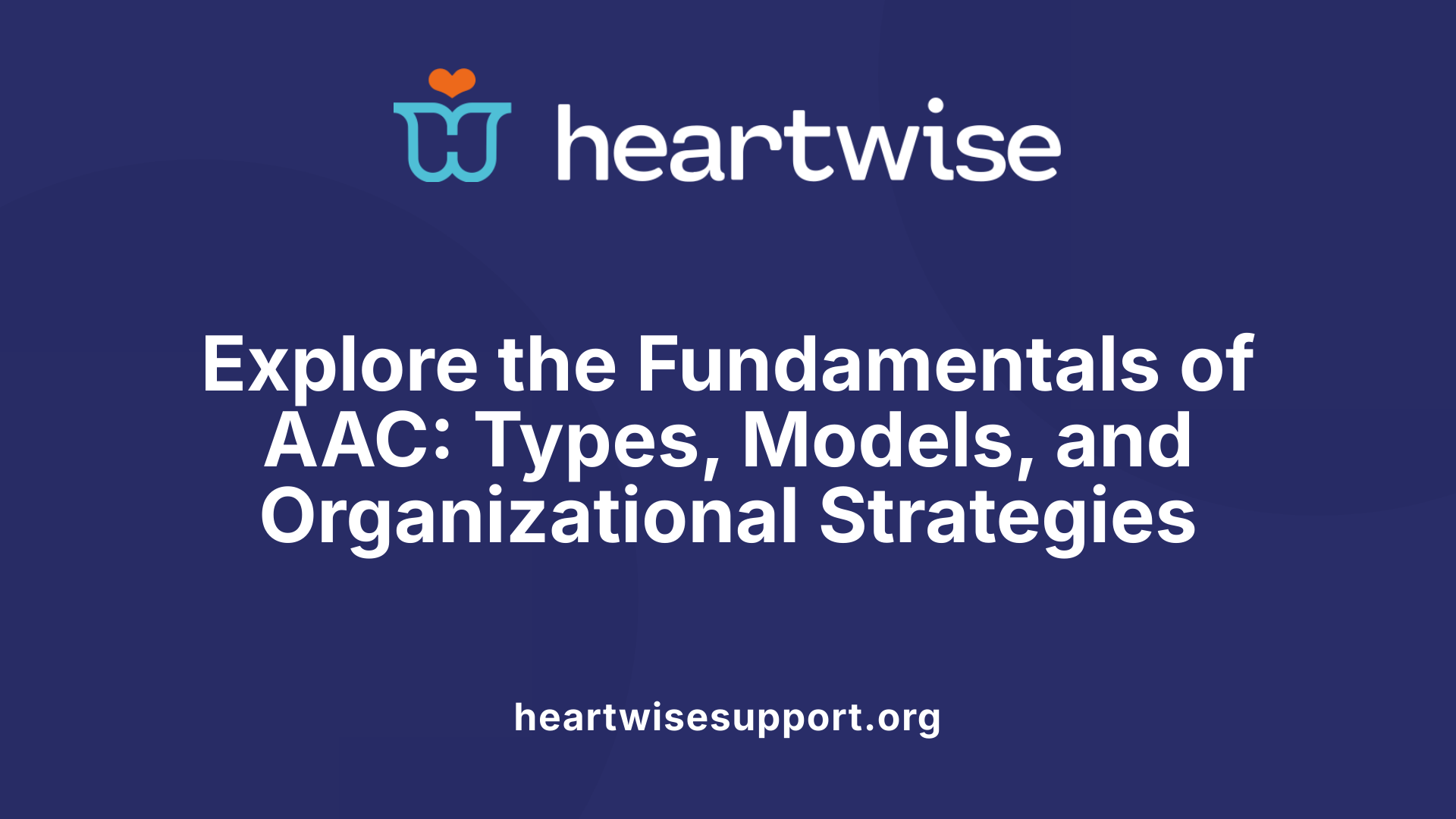
What is augmentative and alternative communication (AAC) and what are its main types and models?
Augmentative and alternative communication (AAC) refers to a collection of methods and tools designed to help individuals with speech, language, or communication impairments to express themselves and interact with others. These systems and strategies support both children and adults who experience difficulties in producing spoken words or understanding language due to various conditions such as autism, cerebral palsy, stroke, or brain injuries.
AAC encompasses many forms, which can be broadly categorized into unaided and aided approaches. Unaided methods involve using the body itself, such as gestures, facial expressions, sign language, or vocalizations, to communicate. These rely solely on the individual's natural ability to produce movements or sounds.
Aided AAC systems include tools that supplement or replace speech, ranging from simple, no-tech options to advanced electronic devices. These systems include communication boards, picture exchange systems, and high-tech speech-generating devices—often customized to fit the user’s needs and abilities.
AAC can be classified as augmentative, adding to natural speech to support communication, or as alternative, serving as a substitute for speech when speaking isn't possible. Sometimes, AAC is used temporarily during recovery from injury or illness, or as a lifelong solution. To be effective, AAC systems typically involve symbolic representations such as pictures, icons, or words, and require interaction with communication partners trained to support their use.
Types of AAC systems: no-tech, low-tech, high-tech
No-tech AAC includes methods that do not involve any electronic devices, such as:
- Gestures
- Facial expressions
- Body language
- Vocalizations
Low-tech AAC involves simple tools that are easy to produce and access, for example:
- Picture communication boards
- PECS (Picture Exchange Communication System)
- Communication books or charts
- Writing or drawing symbols
High-tech AAC utilizes electronic devices and computer technology to generate speech or symbols. Examples include:
- Tablets and smartphones with communication apps like Proloquo2Go
- Speech-generating devices with touchscreens
- Eye-gaze technology for users with motor impairments
- Dynamic display systems that allow the user to select symbols or words to produce speech
Most advanced devices are customizable and allow users to develop vocabulary, organize symbols, and operate interfaces suited to their needs.
Components and features of AAC systems
AAC systems generally contain several important components:
- Symbols: visual representations like pictures, icons, or text.
- Selection methods: ways users choose symbols, including direct selection, scanning, or eye-gaze.
- Interaction partners: communication partners who support and influence AAC use.
- Display features: static or dynamic interfaces, with features such as size, organization, and color.
- Voice output: pre-recorded or synthesized speech that verbalizes selected symbols.
Features like iconicity (how transparent or opaque the symbols are) and display type (static vs. dynamic) influence ease of use and learning.
Models and organizational strategies guiding AAC use
Several models inform how AAC systems are structured, selected, and implemented. These include:
- Participation model: focusing on meaningful participation in daily activities.
- Semantic-syntactic model: organizing symbols around language structure.
- Activity-based models: tailoring AAC use to specific activities or environments.
Guidelines recommend a person-centered approach, considering physical, cognitive, sensory, and environmental factors, and involve collaboration among speech-language pathologists, users, families, and educators.
Implementation strategies involve gradual introduction, modeling, and continuous training. Techniques such as aided language stimulation, where communication partners model AAC use within routine interactions, are crucial.
Careful decision-making is essential, evaluating user abilities, needs, preferences, and contexts. This personalized approach helps establish effective, natural communication that promotes independence and social connection.
Understanding the variety of AAC systems and how they are organized enables professionals and families to select the most suitable options, ensuring that individuals with communication challenges can participate fully in their daily lives.
The Role of Speech-Language Pathologists in AAC Assessment and Intervention
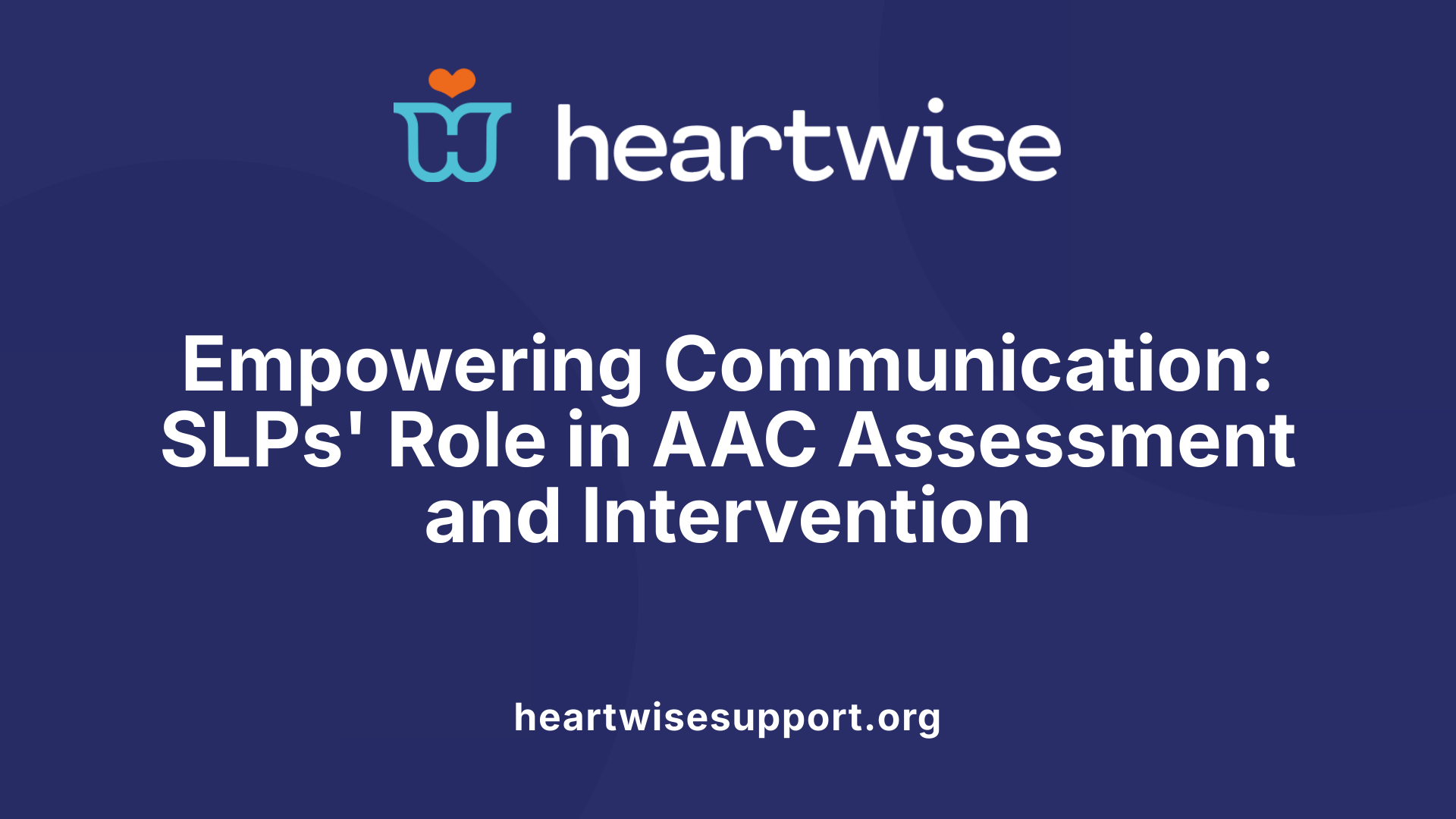
How can speech-language pathologists support in AAC assessment and intervention?
Speech-language pathologists (SLPs) play a vital role in helping individuals with communication challenges find and use the most effective AAC systems. Their support begins with comprehensive assessment, where they evaluate a person’s speech, language, motor skills, cognitive abilities, and personal needs. This thorough evaluation helps identify the most suitable AAC options, which can range from no-tech gestures to high-tech speech-generating devices.
SLPs customize communication plans by choosing devices that match the person's abilities and future needs. They consider factors such as motor control, visual skills, and cognitive capacity. For example, a child with motor impairments might use eye-gaze technology, whereas another might benefit from simple picture boards.
Training is a core part of their role. SLPs teach users how to operate AAC tools effectively, and they also support family members and other caregivers. Training includes modeling device use during routine activities, encouraging communication attempts, and fostering independence.
SLPs also advocate for access to AAC devices. They help families navigate funding options, educate policymakers, and work with schools and healthcare systems to reduce barriers. They ensure ethical practices, cultural understanding, and individual preferences are central in all decisions.
Supporting ongoing use and adaptation of AAC systems is essential. SLPs monitor progress, update systems as needs change, and collaborate with other professionals, such as occupational and physical therapists, to optimize user outcomes.
Assessment techniques for AAC needs
Assessing AAC needs involves multiple steps:
- Case history and personal interviews: Gathering detailed information about the individual’s development, medical history, and daily communication.
- Ecological inventory: Observing communication across different settings like home, school, and community.
- Sensory and motor assessment: Evaluating vision, hearing, and motor control relevant to device operation.
- Speech and language evaluation: Analyzing existing speech skills and understanding language comprehension.
- Symbol assessment: Determining which symbols or representations are most effective for the user.
SLPs use structured tools and frameworks such as the Communication Matrix or the Participation Model to guide their evaluation and ensure a person-centered approach.
Personalized device selection and customization
Choosing the right AAC device involves considering the individual’s physical abilities, cognitive level, and personal preferences. The process includes:
| Step | Focus Area | Examples |
|---|---|---|
| User needs assessment | Motor skills, vision, cognition | Selecting switches, touch screens |
| Symbol and vocabulary | Communication goals | Using familiar words or images |
| Device features | Portability, durability, budget | Handheld tablets, durable boards |
Customization involves configuring symbol size, organization, and access methods to match the user’s skills and daily contexts. The goal is to make devices intuitive and accessible.
Training and support for AAC users and families
Effective use depends on proper training. SLPs teach users how to operate devices confidently and how to embed device use into daily routines.
Training sessions include:
- Modeling and demonstration: Showing how to use the device during natural interactions.
- Prompting and fading: Providing cues to use the device and gradually reducing prompts.
- Encouragement and reinforcement: Celebrating efforts to communicate.
- Partner training: Educating family, teachers, and caregivers on supported communication strategies like aided language stimulation.
Ongoing support involves troubleshooting, updating devices, and creating opportunities for meaningful communication.
Advocacy and access considerations
SLPs champion access for all individuals needing AAC. They assist in securing funding through insurance or government programs, and they educate stakeholders about the value and options for AAC.
They also work to address cultural factors, ensuring communication symbols and strategies respect individual identities. Overcoming barriers like negative attitudes, lack of knowledge, and environmental obstacles is essential.
Interdisciplinary collaboration
SLPs do not work alone. They collaborate with occupational therapists, physical therapists, educators, and psychologists to ensure a holistic approach.
Joint efforts focus on:
| Collaboration Focus | Activities |
|---|---|
| Physical access | Adjusting device positioning |
| Cognitive support | Tailoring vocabulary and symbols |
| Environmental adaptations | Building AAC-friendly environments |
| Family and community engagement | Training and support across settings |
This teamwork enhances device effectiveness and promotes consistent, meaningful communication.
| Aspect | Details | Additional Notes |
|---|---|---|
| Assessment | Speech, motor, cognitive functions | Utilizes tools like the I-ASC and Communication Matrix |
| Device customization | Based on individual needs | Includes symbol types, organization, access methods |
| Training | Modeling, partner education | Involves routines, prompts, and everyday activities |
| Advocacy | Funding, policy, cultural sensitivity | Ensures equitable access to AAC resources |
| Collaboration | Interdisciplinary efforts | Engages families, educators, health professionals |
Ongoing challenges and future directions
While SLPs make significant contributions, there is limited evidence on the effectiveness of some AAC interventions for individuals with complex communication needs. Continued research and innovation are necessary.
Expanding telehealth services offers opportunities for remote assessment and support, increasing accessibility, especially in underserved areas.
In all efforts, the primary focus remains on enhancing communication, supporting independence, and respecting each individual’s identity and preferences.
This comprehensive approach underscores the importance of the speech-language pathologist’s role in transforming lives through tailored, effective AAC strategies.
Strategies and Best Practices for Effective AAC Implementation
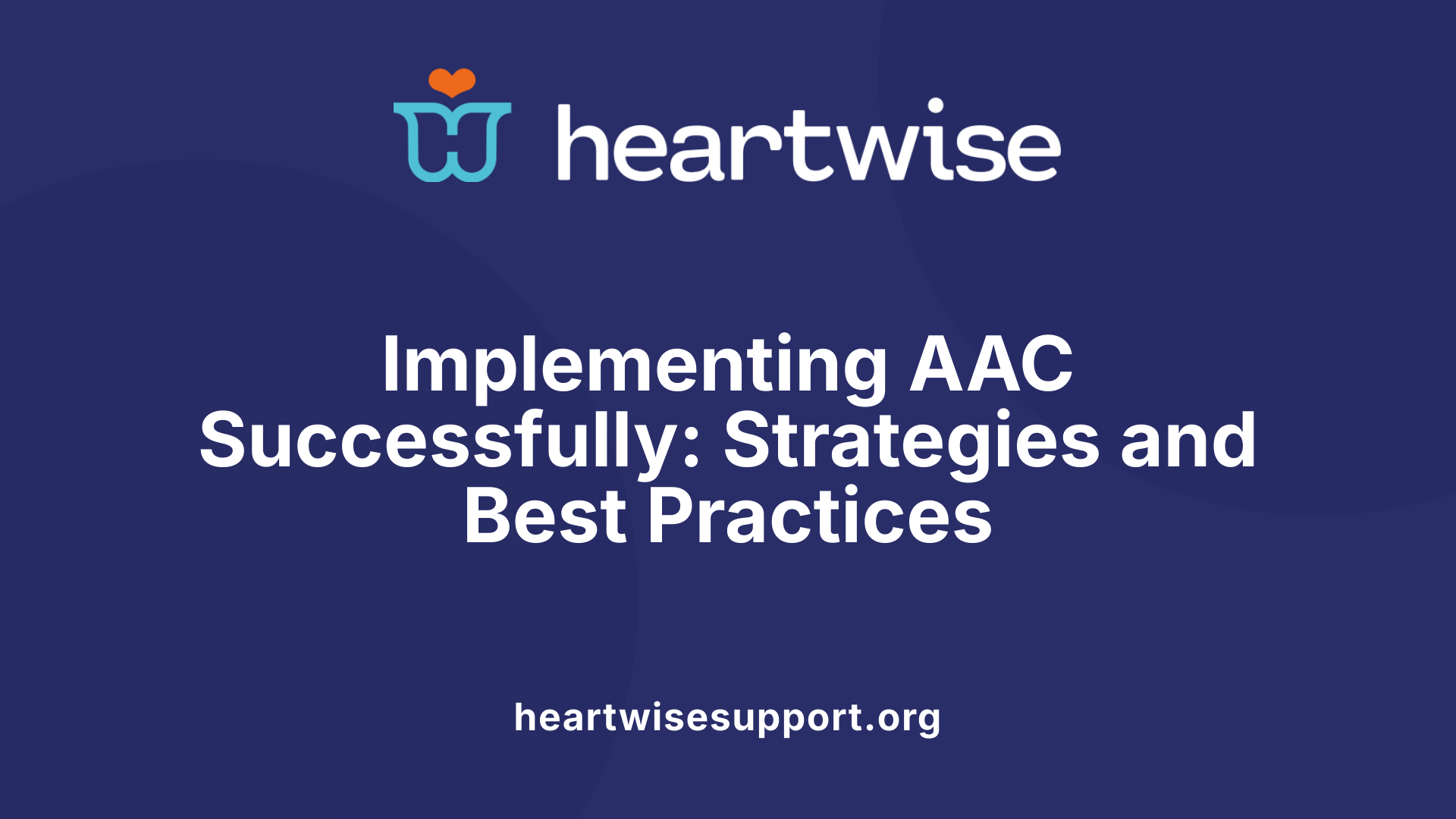
What strategies are effective for implementing AAC in speech therapy settings?
Implementing AAC effectively in speech therapy involves a combination of personalized assessment, targeted intervention, and collaboration. The process begins with a comprehensive evaluation of the individual's physical capabilities, cognitive skills, visual abilities, and environmental factors. This assessment helps identify the most appropriate AAC system—be it unaided methods like sign language and gestures or aided tools such as communication boards or high-tech speech-generating devices.
Once suitable systems are identified, speech-language pathologists (SLPs) focus on tailored training. They model the use of AAC during everyday activities and encourage consistent practice across different settings. Modeling includes demonstrating device use, incorporating AAC into routines, and engaging peers and family members in communication activities.
Aided language stimulation stands out as a particularly effective technique. It involves pairing visual symbols with spoken language to support language learning. Visual supports, such as picture schedules, communication books, and symbols, enhance understanding and participation.
Creating meaningful contexts is essential. This includes embedding AAC use in routines like mealtime, play, and social interactions. Encouraging peer involvement and shared activities fosters natural communication opportunities.
Data collection during therapy helps monitor progress, guide adjustments, and demonstrate effectiveness. Flexible planning ensures the system evolves with the individual’s changing needs, supporting independence and confidence.
Overall, successful AAC integration relies on early assessment, active modeling, environmental modification, ongoing training, and fostering an inclusive communication environment.
Adapting AAC for Different Ages and Needs: Practical Guidelines and Resources
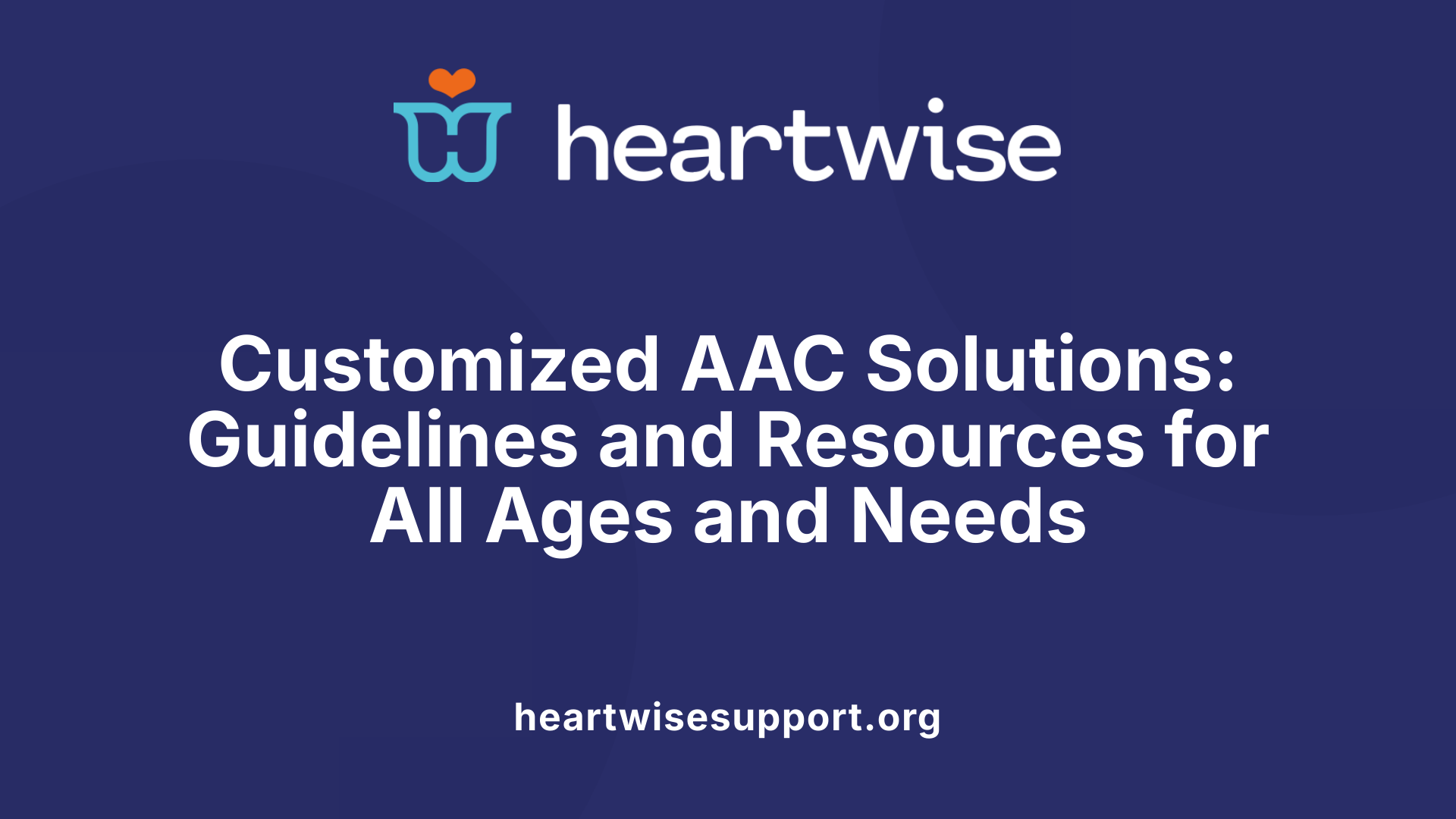
What are best practices and resources for integrating AAC into therapy for individuals of various ages and needs?
Effective integration of augmentative and alternative communication (AAC) into therapy requires a personalized approach that considers the unique abilities, preferences, and cultural backgrounds of each individual. Clinicians should start with comprehensive, person-centered assessments, evaluating physical, cognitive, linguistic, visual, and environmental factors. These assessments help determine the most suitable AAC tools, whether unaided methods like sign language or aided devices like communication boards, tablets, or speech-generating devices.
Selecting the right AAC system involves considering mobility, vision, cognitive capacity, and the contexts in which communication occurs. Regular reviews of these systems are crucial to adapt to evolving needs and skills. Once an appropriate system is chosen, therapists should focus on effective modeling, demonstrating the use of AAC during routine activities, and training communication partners—including family members, teachers, and peers—to support consistent use.
Incorporating evidence-based strategies is vital. These include aided language stimulation, which involves using visual symbols alongside speech, and focusing on core vocabulary to maximize communication efficiency. Visual supports, social interaction techniques, and integrating AAC into natural environments enhance functional use. Collaboration among speech-language pathologists, families, educators, and multidisciplinary teams ensures that therapy goals are aligned, relevant, and achievable across all settings.
Utilizing professional resources like clinical guidelines, online courses, and workshops supports therapists in staying current. Resources such as the
Overcoming Barriers and Promoting Effective AAC Use in Early Intervention and Autism Therapy
What are common clinical approaches, frameworks, and barriers in AAC use within early intervention and autism therapy?
In early intervention and autism therapy, speech-language pathologists (SLPs) employ diverse clinical approaches to optimize augmentative and alternative communication (AAC) use. Central to these approaches are comprehensive assessments grounded in established frameworks such as the International Classification of Functioning, Disability and Health (ICF) and the participation model. These frameworks help clinicians understand the child's communication abilities within their broader social and environmental contexts.
Assessment components typically include evaluating body functions (motor, sensory, cognitive), activity limitations, participation restrictions, and environmental factors. This holistic approach ensures that intervention is tailored to the child's unique needs, preferences, and cultural settings.
Intervention strategies often incorporate aided language stimulation, which involves modeling the use of visual symbols paired with speech or gestures. Visual supports such as picture boards, social stories, and routines support understanding and engagement. Behavioral techniques, including discrete trial training and incidental teaching, are applied to develop functional communication skills.
Despite best practices, several barriers hinder effective AAC implementation. Stakeholder knowledge deficits are common, with families or educators lacking understanding of AAC systems' capabilities and benefits. Negative attitudes or misconceptions about AAC, including stigma or emotional resistance, can reduce early adoption or sustained use.
Resource limitations pose significant challenges, encompassing insufficient funding, limited access to appropriate devices, and shortages of trained professionals. Device fit issues, such as poor customization leading to sensory overload or difficulty with motor control, further impede progress. Other obstacles include inconsistent use across environments, emotional and behavioral challenges, and cultural mismatches that affect acceptance and relevance.
Overcoming these barriers demands a multifaceted approach. Ongoing education and training for families and professionals can bridge knowledge gaps. Enhancing communication among multidisciplinary teams fosters coordinated care and shared decision-making. Providing flexible, individualized strategies that accommodate diverse needs and preferences encourages engagement. Increasing access to resources, including funding avenues and training programs, supports sustainable AAC use. Addressing emotional and behavioral barriers involves patience, reassurance, and reinforcing successes.
Recognizing the importance of cultural responsiveness ensures that AAC interventions respect individual identities, language preferences, and cultural values. Tailoring communication supports and device features to reflect these considerations promotes acceptance and effective use.
In summary, transforming AAC use in early intervention and autism therapy involves integrating clinical frameworks, addressing practical barriers, and fostering an inclusive, supportive environment that empowers children and their families to communicate effectively.
Supporting AAC in Educational Settings Through Resources and Strategies
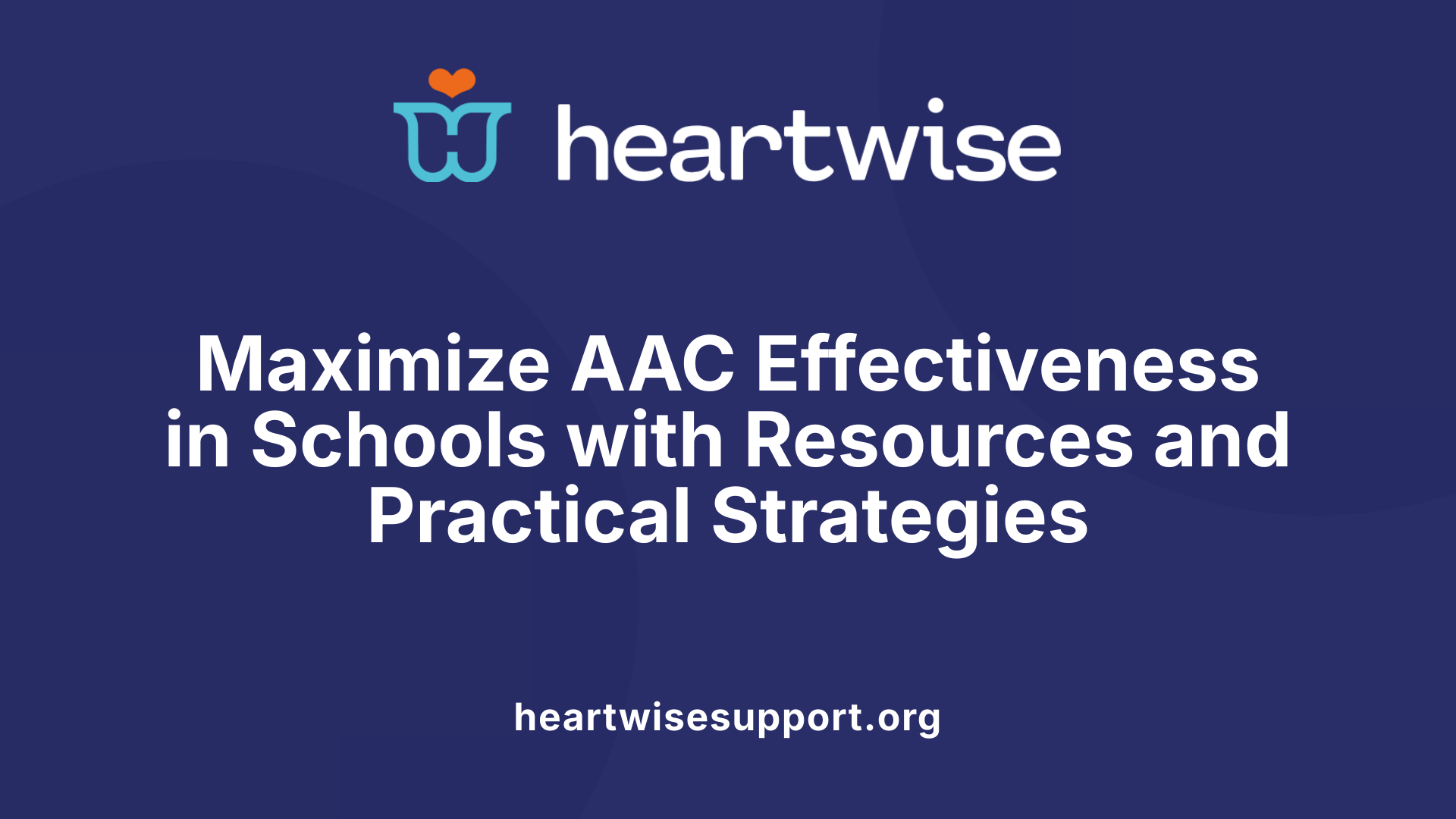
What resources and tips are available for effective AAC device use in educational environments?
Implementing AAC consistently and effectively in schools depends on access to various resources and practical strategies. First, educators and support staff benefit from comprehensive training manuals and guides provided by manufacturers or professional organizations. These resources often include step-by-step instructions on device operation, maintenance, and troubleshooting.
Community support also plays a vital role. Local AAC centers, professional networks, and online forums offer peer support, workshops, and webinars that help educators stay updated on best practices and new technology advancements. Speech-language pathologists (SLPs) are integral to this process—they conduct thorough, culturally sensitive assessments and develop tailored intervention plans to meet each student's unique communication needs.
Practical tips for successful AAC device use include incorporating the device into daily routines and classroom activities. Making devices accessible is crucial; for example, placing them on desks or in designated learning stations facilitates spontaneous use.
Modeling AAC use consistently is another effective approach—teachers and peers should demonstrate the system during interactions, encouraging students to imitate and learn.
Involving communication partners, such as classmates and family members, in activities fosters natural, meaningful use of the device. For example, shared reading sessions, singing, and games provide enjoyable contexts for practicing communication.
It's important to update vocabulary regularly to reflect evolving needs and interests, ensuring that the AAC system remains relevant and engaging for the user. Positive reinforcement encourages continued use and builds confidence.
Collaboration among educators, families, and specialists ensures that goals are aligned and the environment is optimized for communication development. This teamwork extends to modifying the physical environment, integrating AAC strategies into curriculum planning, and providing ongoing professional development.
Technical maintenance and troubleshooting support are essential components; maintaining devices ensures reliability and minimizes frustration.
Overall, fostering an inclusive classroom culture that promotes social participation and literacy development supports students using AAC to become more autonomous and active members of their learning community. Ensuring accessibility, ongoing support, and collaborative planning creates a strong foundation for successful AAC integration.
Research and Innovations in AAC: Assessment, Selection, and Personalized Intervention
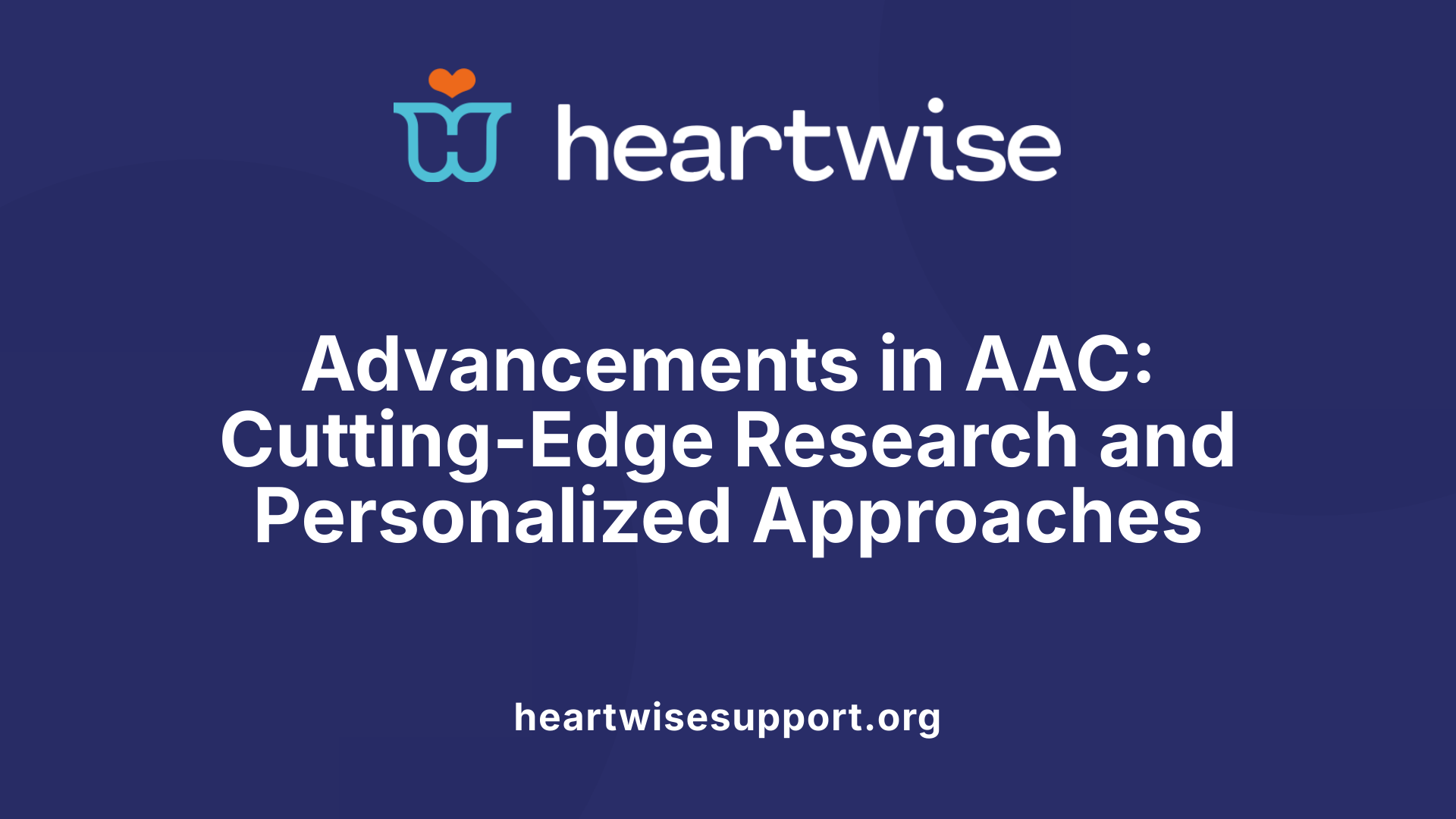
What does current research say about AAC assessment, selection, and tailored intervention strategies?
Recent studies and developments in the field of augmentative and alternative communication (AAC) highlight the importance of a comprehensive, personalized approach to assessment and intervention. Professionals now emphasize the need for a thorough evaluation process that combines formal assessments—such as standardized tests and structured observations—with informal strategies that consider the individual’s unique context, strengths, and preferences. Incorporating cultural and linguistic factors is increasingly recognized as crucial to ensuring that AAC systems are relevant and effective.
Assessment frameworks like the Communication Matrix, the Participation Model, and the I-ASC provide clinicians with tools to understand a person’s body functions, activity limitations, environmental influences, and personal goals. These frameworks promote an ongoing process, where reassessment ensures the AAC system remains aligned with the user’s evolving needs.
Matching technology to user needs is a central focus. Selection involves believing that no single device or strategy fits all; rather, it requires careful consideration of motor skills, cognitive abilities, visual acuity, and the environment. For example, a child with motor difficulties may benefit from eye-tracking technology, while another may prefer low-tech picture boards. Ongoing training and support for both users and their communication partners are essential for successful implementation.
Technological advancements are rapidly transforming AAC practices. Artificial intelligence (AI) enables devices to predict and suggest words or phrases, making communication more natural and efficient. Eye-tracking systems allow individuals with severe motor impairments to select symbols or speech outputs simply by gaze. Mobile devices, such as tablets equipped with dedicated AAC apps like Proloquo2Go or Tar Heel Reader, are increasingly accessible tools that integrate seamlessly into daily routines.
Interdisciplinary and personalized approaches are at the forefront of recent research. Collaboration among speech-language pathologists, occupational therapists, educators, families, and the individuals themselves helps tailor systems that are suited to real-life environments. This approach emphasizes not only the technical aspects but also considers cultural values, language preferences, and social contexts.
Effective AAC interventions rely on continuous evaluation, where data on usage patterns, success rates, and social participation inform adjustments. Techniques like aided language stimulation, core vocabulary teaching, and supported literacy strategies are integrated into individualized plans. Training communication partners in active listening, modeling, and facilitating opportunities for practice enhances the likelihood of successful communication.
The overall message from current research underscores that AAC is a dynamic, lifelong process. It involves a blend of evidence-based practices, innovative technology, and interdisciplinary collaboration. With ongoing advancements and a focus on personalized care, the future of AAC looks promising for improving independence, social inclusion, and quality of life for individuals with complex communication needs.
Closing Remarks and Future Directions in AAC Practice
As AAC technology and clinical practices continue to evolve, the role of speech-language pathologists remains central to delivering personalized, effective communication support. Emphasizing interdisciplinary collaboration, ongoing research, and culturally sensitive approaches ensures that individuals receive the most appropriate AAC systems for their needs. Future advancements—such as AI integration and enhanced user interfaces—promise to further expand the potential for meaningful communication, fostering greater independence and societal participation for AAC users.
References
- Augmentative and Alternative Communication (AAC) - ASHA
- AAC Speech Therapy | SLP's Guide to Teaching AAC
- Augmentative and Alternative Communication (AAC) - ASHA
- Augmentative and alternative communication (AAC) overview - RCSLT
- Augmentative & Alternative Communication (AAC) Allies: Strategies ...
- Augmentative Alternative Communication in Speech Pathology
- [PDF] 54 Tips and Tricks for Implementing AAC in the Classroom
- How Do Speech Therapists Implement AAC Systems for Autism?
- Augmentative and alternative communication (AAC) - guidance











